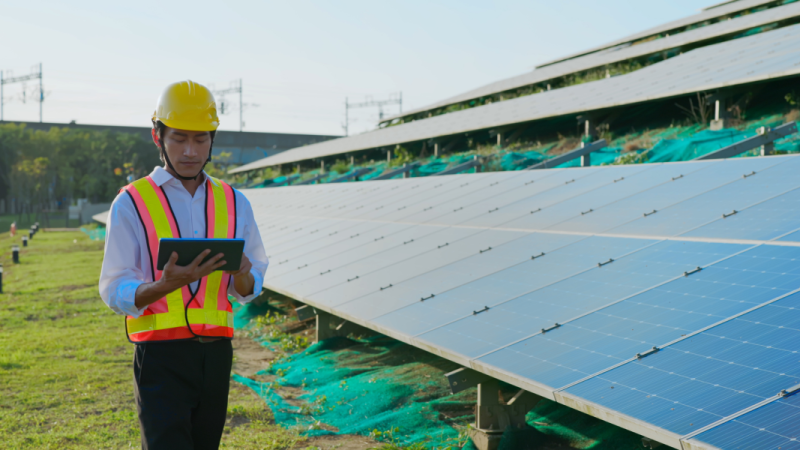Factors to Consider When Using Mats for Renewable Energy Construction Projects

Categories :
The global movement toward sustainable energy sources propels the rapid growth of renewable energy projects like wind farms and solar installations. These projects often require robust construction efforts involving heavy machinery and equipment, necessitating using renewable energy construction access mats for ground protection. In such scenarios, mats become essential to ensure the integrity of the environment and the efficiency of the construction process. Here are several crucial factors to consider when employing mats for renewable energy construction projects.
Environmental Impact Assessment
Conducting a comprehensive environmental impact assessment is essential before embarking on any renewable energy construction project involving mats. This assessment helps identify potential ecological risks and ensures adherence to regulatory requirements. Factors such as soil composition, vegetation type, and wildlife habitats must be carefully evaluated to determine the most suitable matting solutions. Project managers can mitigate potential harm and implement appropriate mitigation measures by assessing the environmental impact beforehand.
Site-specific Conditions
Every renewable energy construction site presents unique challenges and requirements that must be considered when selecting mats. Factors such as terrain, weather conditions, and access routes can significantly influence the choice of matting systems. For instance, remote or environmentally sensitive projects may require specialized mats with low ground pressure to minimize soil disturbance. Likewise, sites prone to heavy rainfall or extreme temperatures may necessitate using durable, weather-resistant mats to ensure uninterrupted operations. Project managers can choose the most suitable mats to optimize performance and minimize environmental impact by considering site-specific conditions.
Load-Bearing Capacity
One of the critical factors to consider when using mats for renewable energy construction projects is their load-bearing capacity. Heavy machinery and equipment in these projects exert considerable pressure on the ground, leading to soil compaction, erosion, and habitat destruction if not properly managed. Choosing mats with ample load-bearing capacity is crucial to distribute weight and prevent harm to the underlying surfaces evenly. Additionally, understanding the specific weight requirements of equipment and vehicles involved in the project is essential for selecting the appropriate matting solution. By ensuring adequate load-bearing capacity, project managers can safeguard the integrity of the construction site while promoting environmental sustainability.
Erosion Control
Effective erosion control is vital for preserving soil quality and preventing sediment runoff during renewable energy construction projects. Mats are crucial in stabilizing the ground and minimizing erosion by providing a protective barrier against water, wind, and other erosive forces. Depending on the site's topography and environmental conditions, different erosion control measures may be required, including using erosion control blankets, sediment fences, and vegetative stabilization techniques. Integrating erosion control measures with matting solutions helps maintain soil integrity, protect water quality, and preserve natural habitats throughout construction.
Accessibility and Mobility
The accessibility and mobility of matting systems are essential for ensuring efficient project execution and minimizing logistical challenges. Construction sites in remote or challenging terrains may require mats that are easy to transport, install, and relocate as needed. Portable and modular matting solutions offer flexibility and versatility, allowing for quick deployment and adjustment to changing site conditions. Additionally, mats with interlocking or overlapping designs facilitate seamless personnel, equipment, and materials movement across the site while minimizing soil disturbance and environmental impact. By prioritizing accessibility and mobility, project managers can streamline operations and optimize resource utilization during renewable energy construction projects.
Long-term Sustainability
Incorporating long-term sustainability considerations into matting decisions is necessary for minimizing environmental impact and maximizing the lifespan of renewable energy infrastructure. Durable and recyclable matting materials, such as high-density polyethylene (HDPE) and composite plastics, offer sustainable alternatives to traditional timber or steel mats. These materials are resistant to moisture, chemicals, and UV exposure, ensuring longevity and minimizing the need for frequent replacements. Additionally, mats designed for reuse or recycling at the end of their service life contribute to resource conservation and waste reduction efforts. By prioritizing long-term sustainability, project managers can enhance the environmental performance of renewable energy construction projects while achieving cost savings and operational efficiency.
Regulatory Compliance
Conformity with the regulatory requirements and industry standards is paramount for ensuring the legality and integrity of renewable energy construction projects. Mats used in these projects must meet specific regulatory guidelines related to environmental protection, worker safety, and land use management. This includes obtaining permits for ground disturbance activities, adhering to erosion control regulations, and implementing measures to protect sensitive habitats and water bodies. Furthermore, mats must be sourced from reputable suppliers and manufacturers that comply with relevant quality and safety standards. Project managers can decrease legal risks by prioritizing regulatory compliance and upholding their commitment to environmental stewardship.
Conclusion
Projects for renewable energy construction access mats represent a significant opportunity to transition towards a more sustainable energy future. Mats play a crucial role in supporting these endeavors by providing ground protection, stability, and erosion control throughout the construction process. By considering factors such as environmental impact, site-specific conditions, load-bearing capacity, erosion control, accessibility, long-term sustainability, and regulatory compliance; project managers can optimize the use of mats and minimize their environmental footprint. By integrating these considerations into decision-making processes, renewable energy construction projects can achieve their goals effectively while preserving the natural environment for the upcoming generations.
Citiesabc was created by a team of global industry leaders, academics and experts to create new solutions, resources, rankings and connections for the world’s top cities and populations.








